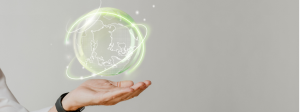
More Financing for Startups and Scaleups in Europe
More Financing for Startups and Scaleups in Europe Óscar SalazarSettings The European Commission has presented the EU Startup and Scaleup Strategy, aimed at positioning Europe
It is very gratifying to see how companies have a clear short/medium-term objective to reduce their energy consumption costs. Unfortunately, this is only the case from the moment they have made a significant impact on their wallets. No matter how much social awareness you want to awaken in society, or how much help you offer, until you don’t hit your pocket, you will not see a clear mobilisation in this sense, unfortunately for all of us.
From Euro-Funding we offer some recommendations to reduce these costs, which we have probably all already thought of or which have been reflected in numerous references, studies, articles, etc. There are some actions to be carried out at no cost or at a very low cost, in which it is not necessary to think about possible aid of the kind we have been seeing non-stop in recent years, through lines of the well-known Next Generation funds.
The first recommendation for companies is to raise awareness among your company’s staff, involving them in energy saving. It is important that they know how we spend energy and how we use our facilities in order to detect possible energy leaks. There are many small actions that would allow us to reduce a lot of consumption, with a little collaboration between all of us, but we have to know why we do it. It is not necessary to verify an energy management system, but it is advisable to implement it, with a work team or a responsible person, and of course with the support of the company’s management, otherwise there will be nothing to do.
First of all, it is essential to make an inventory of energy consuming equipment and to analyse how it is used, how many hours it is active, how many hours it should be active, how it is controlled, who is responsible for its use, whether it can be controlled in a more efficient way, and all the questions that may arise about that specific installation. In the case of production equipment, it is more complex and, through suppliers, we can analyse small improvements to be implemented in the equipment, attend trade fairs to discover the best technologies available on the market, to do the same, with much lower associated costs, as process equipment is evolving with the energy criterion well established.
In the auxiliary installations, which are the usual ones in service activities, we find large energy consumption mainly in lighting and air conditioning and other consumption such as office automation, as well as small additional equipment that do not carry much weight, but it is interesting to analyse everything: is it necessary to light the entire surface of our premises? do we have presence everywhere? is the same activity carried out? it is as simple as sectoring (switches) by zones, placing presence sensors and light sensors. With this, we reduce the hours of operation of the equipment and it does not harm the working conditions of the staff. Please, let’s not leave spaces without people lit up. It should bother us to see that.
We arrive in winter, 7ºC in the street and we go into our offices and set all the thermostats to 25ºC. It is not necessary. We have recommendations and obligations to have temperatures below 19ºC in winter and above 27ºC in summer, which makes perfect sense. It is not a question of having the same temperature all year round in our working environment, as our clothing changes and we have to be accordingly. Then it takes time for the equipment to reach the setpoint temperatures and the further away from the setpoint temperature, the higher the energy consumption. Therefore, it is advisable to wear clothes according to the time of year and to follow good temperature control recommendations. It is not possible for everyone to have control over thermostats. However, designing installations correctly and avoiding stratification is vital to save on energy bills. If we do not work in minimum comfort conditions, our last concern will be energy savings.
If all employees are aware of the company’s concern for energy efficiency, we will have warning and communication channels, so that, if irregular cases are detected, the company is informed and corrective measures can be taken. Rooms with computer, air-conditioning and lighting equipment on, with no staff present. At industrial level, it is necessary to analyse how many compressed air leaks exist. Process equipment switched on, without production, just there ready for when the time comes. For all uses in general, it is key to switch off equipment that is not operational.
Therefore, it is also necessary to emphasise two technologies that should be 100% in place or should be in place, making sure that there is not a single facility nationwide that does not have these technologies:
These actions involve a financial outlay, but let’s think about the medium-term return and, in addition, the significant real aid that we can find. Right now, the most visible aid for the second proposal are the calls under Royal Decree 1124/2021, corresponding to the incentive programme for the implementation of renewable thermal energy installations in different sectors of the economy, among which we find aerothermal energy, but also solar thermal, geothermal or biomass, with aid of between 35% and 45% depending on the type of beneficiary. Or the call under Royal Decree 477/2021 corresponding to the incentive programme linked to self-consumption and storage, with renewable energy sources, as well as the implementation of renewable thermal systems in the residential sector, where the aid can reach 100% of the investment.
Finally, once we have improved our habits and replaced the equipment that consumes the most energy, we can think about reducing external demand, with the implementation of renewable energies to obtain electrical energy that we will consume in our installations, such as the installation of photovoltaic panels or innovative wind energy systems, with storage systems, to reduce external dependence as much as possible and reduce the high energy costs we are facing.
It is true that we have a long way to go, but it is time to sit down and think about the steps we are going to take, and take them.
At Euro-Funding we accompany our clients throughout the process of implementing energy efficiency measures and the development of actions that reduce environmental impact through the development of services adapted to the needs and legal obligations.

More Financing for Startups and Scaleups in Europe Óscar SalazarSettings The European Commission has presented the EU Startup and Scaleup Strategy, aimed at positioning Europe

Do data centres truly improve sustainability? Fernando GómezSettings The rise of Industry 4.0 and the increasing use of new technologies have created a significant dependence

Tracking Europe’s Green Transition: Insights from LIFE programme trends (2021–2024) Marie LatourSettings Since the start of the 2021-2027 programming period, the LIFE Programme has financed
